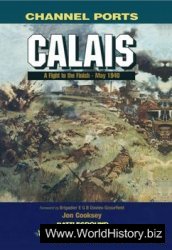Evolution and Prehistory features a range of learning aids, in addition to the three unifying themes described above. Each pedagogical piece plays an important role in the learning process—from clarifying and enlivening the material to revealing relevancy and aiding recall.
Accessible Language and a Cross-Cultural Voice
What could be more basic to pedagogy than clear communication? In addition to our standing as professional anthropologists, all four co-authors have made a specialty of speaking to audiences outside of our profession. Using that experience in the writing of this text, we consciously cut through unnecessary jargon to speak directly to students. Manuscript reviewers have recognized this, noting that even the most difficult concepts are presented in prose that is straightforward and understandable for today’s first - and second-year college students. Where technical terms are necessary, they appear in bold-faced type, are carefully defined in the narrative, and are presented again in the running glossary in simple, clear language; these terms also appear in the glossary at the end of the book.
To make the narrative more accessible to students, we have broken it up into smaller bites, shortening the length of the paragraphs. We have also inserted additional subheads to provide visual cues to help students track what has been read and what is coming next.
Accessibility involves not only clear writing enhanced by visual cues but also a broadly engaging voice or style. The voice of Evolution and Prehistory is distinct among introductory texts in the discipline, for it has been written from a cross-cultural perspective. We avoid the typical Western “we/they” voice in favor of a more inclusive one that will resonate with both Western and non-Western students and professors. Also, we highlight the theories and work of anthropologists from all over the world. Finally, we have drawn the text’s cultural examples from industrial and postindustrial societies as well as nonindustrial ones. No doubt these efforts have played a role in the book’s international appeal, evident in various translations and international editions.
Compelling Visuals
Haviland et al. texts repeatedly garner high praise from students and faculty for having a rich array of visuals, including maps, photographs, and figures. This is important since humans—like all primates—are visually oriented, and a well-chosen image may serve to “fix” key information in a student’s mind. Unlike some competing texts, all of our visuals are in color, enhancing their appeal and impact. Notably, all maps and figures (many new to this edition) have been created with a color-blind sensitive palette.
PHOTOGRAPHS
Our pages feature a hard-sought collection of new and meaningful photographs. Large in size, many of them feature substantial captions that help students do a “deep read” of the image. Each chapter features at least fourteen pictures, and many chapters contain our popular Visual Counterpoints—side-by-side photos that effectively compare and contrast biological or cultural features.
MAPS
Map features include our “Putting the World in Perspective” map series, locator maps, and distribution maps that provide overviews of key issues such as pollution, endangered species, and fossil localities. Of special note are the Globalscape maps and stories, described in the boxed features section a bit further on.
Challenge Issues and Questions for Reflection
Each chapter opens with a Challenge Issue and accompanying photograph, which together carry forward the book’s theme of humankind’s responses through time to the fundamental challenges of survival within the context of the particular chapter. And each chapter closes with five Questions for Reflection, including one that relates back to the Challenge Issue presented in the chapter’s opening. These questions are designed to stimulate and deepen thought, trigger class discussion, and link the material to the students’ own lives.
Chapter Preview
Every chapter opening also presents three or four preview questions that mark out the key issues covered in the chapter. Beyond orienting students to the chapter contents, these questions provide study points useful when preparing for exams.
Integrated Gender Coverage
In contrast to many introductory texts, Evolution and Prehistory integrates rather than separates gender coverage. Thus material on gender-related issues is included in every chapter. The result of this approach is a measure of gender-related material that far exceeds the single chapter that most books contain.
Why is the gender-related material integrated? Because concepts and issues surrounding gender are almost always too complicated to remove from their context. Moreover, spreading this material through all of the chapters has a pedagogical purpose, for it emphasizes how considerations of gender enter into virtually everything people do. Further, integration of gender into the book’s “biological” chapters allows students to grasp the analytic distinction between sex and gender, illustrating the subtle influence of gender norms on biological theories about sex difference. Gender-related material ranges from discussions of gender roles in evolutionary discourse and the ways that contemporary gender norms can shape biological theories to studies of varied sexual behavior in nonhuman primates and same-sex marriage. Through a steady drumbeat of such coverage, this edition avoids ghettoizing gender to a single chapter that is preceded and followed by resounding silence.
Glossary as You Go
The running glossary is designed to catch the student’s eye, reinforcing the meaning of each newly introduced term. It is also useful for chapter review, as the student may readily isolate the new terms from those introduced in earlier chapters. A complete glossary is also included at the back of the book. In the glossaries, each term is defined in clear, understandable language. As a result, less class time is required for going over terms, leaving instructors free to pursue other matters of interest.
Special Boxed Features
Our text includes five types of special boxed features. Every chapter contains a Biocultural Connection, along with two of the following three features: an Original Study, Anthropology Applied, and Anthropologist of Note. In addition, about half of the chapters include a Globalscape. All of these boxed features are carefully placed and introduced within the main narrative to alert students to their importance and relevance.
BIOCULTURAL CONNECTIONS
Appearing in every chapter, this signature feature of the Haviland et al. textbooks illustrates how cultural and biological processes interact to shape human biology, beliefs, and behavior. It reflects the integrated biocultural approach central to the field of anthropology today. New to this edition is a critical thinking question to accompany each topic explored. The thirteen Biocultural Connection titles hint at the intriguing array of topics covered by this feature:
¦ “The Anthropology of Organ Transplantation”
¦ “The Social Impact of Genetics on Reproduction”
¦ “Why Red Is Such a Potent Color,” by Meredith F. Small
¦ “Disturbing Behaviors of the Orangutan,” by Anne Nacey Maggioncaldo and Robert M. Sapolsky
¦ “Kennewick Man”
¦ “Why ‘Ida’ Inspires Navel-Gazing at Our Ancestry,” by Meredith F. Small
¦ “Evolution and Human Birth”
¦ “Sex, Gender, and Female Paleoanthropologists”
¦ “Paleolithic Prescriptions for the Diseases of Civilization”
¦ “Breastfeeding, Fertility, and Beliefs”
¦ “Perilous Pigs: The Introduction of Swine-Borne Disease to the Americas,” by Charles C. Mann
¦ “Beans, Enzymes, and Adaptation to Malaria”
¦ “Picturing Pesticides”
ORIGINAL STUDIES
Written expressly for this text, or selected from ethnographies and other original works by diverse scholars, these studies present concrete examples that bring specific concepts to life and convey the passion of the authors. Each study sheds additional light on an important anthropological concept or subject area found in the chapter where it appears. Notably, these boxes are carefully integrated within the flow of the chapter narrative, signaling students that their content is not extraneous or supplemental. Appearing in thirteen chapters, Original Studies cover a wide range of topics, evident from their titles:
¦ “Fighting HIV/AIDS in Africa: Traditional Healers on the Front Line,” by Suzanne Leclerc-Madlala
¦ “Ninety-Eight Percent Alike: What Our Similarity to Apes Tells Us about Our Understanding of Genetics, ”by Jonathan Marks
¦ “Ethics of Great Ape Habituation and Conservation: The Costs and Benefits of Ecotourism,” by Michele Goldsmith
¦ “Reconciliation and Its Cultural Modification in Primates,” by Frans B. M. de Waal
¦ “Whispers from the Ice,” by Sherry Simpson
¦ “Melding Heart and Head,” by Sir Robert May
¦ “Ankles of the Australopithecines,” by John Hawks
¦ “Humans as Prey,” by Donna Hart
¦ “Paleolithic Paint Job,” by Roger Lewin
¦ “History of Mortality and Physiological Stress,” by Anna Roosevelt
¦ “Action Archaeology and the Community at El Pilar,” by Anabel Ford
¦ “A Feckless Quest for the Basketball Gene,” by Jonathan Marks
¦ “Dancing Skeletons: Life and Death in West Africa,” by Katherine Dettwyler
ANTHROPOLOGY APPLIED
These succinct and compelling profiles illustrate anthropology’s wide-ranging relevance in today’s world and give students a glimpse into a variety of the careers anthropologists enjoy. Featured in seven chapters, they include
¦ “Forensic Anthropology: Voices for the Dead”
¦ “What It Means to Be a Woman: How Women Around the World Cope with Infertility,” by Karen Springen
¦ “The Congo Heartland Project”
¦ “Cultural Resource Management,” by John Crock
¦ “Stone Tools for Modern Surgeons”
¦ “The Real Dirt on Rainforest Fertility,” by Charles C. Mann
¦ “Tell It to the Marines: Teaching the Troops about Cultural Heritage,” by Jane C. Waldbaum
ANTHROPOLOGISTS OF NOTE
Profiling pioneering and contemporary anthropologists from many corners of the world, this feature puts the work of noted anthropologists in historical perspective and draws attention to the international nature of the discipline in terms of both subject matter and practitioners. This edition highlights eleven distinct anthropologists who reflect the intellectual and geographic diversity of the discipline: Ber-hane Asfaw, Franz Boas, Peter Ellison, Jane Goodall, Kinji Imanishi, Fatimah Jackson, Louis S. B. Leakey, Mary Leakey, Matilda Coxe Stevenson, Allan Wilson, and Xinzhi Wu.
GLOBALSCAPES
Appearing in about half of the chapters, this unique feature charts the global flow of people, goods, and services, as well as pollutants and pathogens. With a map, a story, and a photo, the feature shows how the world is interconnected through human activity with topics geared toward student interests. Each one ends with a Global Twister—a question that prods students to think critically about globalization. Globalscapes in this edition are
¦ “A Global Body Shop?,” investigating human organ trafficking around the world
¦ “Gorilla Hand Ashtrays?,” showing how mining for the cell phone component coltan is linked to gorilla habitat destruction
¦ “Whose Lakes Are These?,” exploring the global and local impact of efforts to preserve places of shared cultural and natural importance through UNESCO’s World Heritage List
¦ “Factory Farming Fiasco?,” investigating the global industrial farming practices that have led to the current swine flu pandemic
¦ “Iraqi Artifacts in New York City?,” exploring the effects of the Iraq War on the precious Mesopotamian artifacts that were housed in the National Museum in Baghdad




 World History
World History









